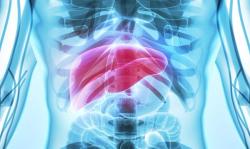
OR WAIT null SECS
Interclass Versus Intraclass Switching: IL-23, IL-17A Inhibitors for Psoriasis
These findings made comparisons between clinical outcomes of interclass and intraclass switching of biologic treatments among individuals with psoriasis.
Interclass switching with interleukin (IL)-17A and IL-23 inhibitors may be considered a promising strategy versus intraclass switching for patients with psoriasis, according to new findings, and such a move could lead to a treatment response comparable to those shown by biologic-naïve patients.1
These conclusions resulted from new research which was led by Myengwoo Nam, from the department of dermatology at Seoul National University Hospital in Seoul, Korea. Nam and colleagues noted that there had been prior research on interclass biologic switching in this disease space.
“Although several studies have suggested that interclass switching of biologics for psoriasis could be a good therapeutic option, whether switching strategies lead to better clinical outcomes remains unclear,” Nam et al. wrote. “Therefore, we compared the clinical outcomes of interclass and intraclass switching of biologics for psoriasis.”2
Background and Design
The investigators used a retrospective trial design, looking at subjects that had diagnoses of moderate-to-severe plaque psoriasis and treatment with biologic therapies for over half a year. This was specifically patients who had been at the SNU-SMG Boramae Medical Center in the timeframe from August 2018 - January 2024. Data from 131 individuals were ultimately assessed.
The research team separated the participants into 3 cohorts: those who were biologic-naïve , those doing intraclass switching ( between IL-23 or IL-17A inhibitors), and those doing interclass switching (from an IL-23 inhibitor to an IL-17A inhibitor or the reverse). While ustekinumab was noted as being an IL-12/23 inhibitor, the drug was placed into the selective IL-23 inhibitor category given its direct IL-23 inhibition.
No switches from guselkumab, risankizumab, or ixekizumab to ustekinumab or secukinumab had been made by subjects, so all current biologics featured in both switching cohorts were guselkumab, risankizumab, or ixekizumab. Therefore, only these 3 drugs were provided by the investigators as the current biologics set for the naïve cohort.
The research team defined primary and secondary drug responses as reaching a 90% improvement in Psoriasis Area and Severity Index (PASI) score (PASI 90) from the point of baseline and PASI 100, respectively. For the purposes of estimating and contrasting subjects’ rates of PASI 90 and PASI 100 responses within the 3 arms of the study, they utilized the Kaplan–Meier method and log-rank test.
Additionally, a Cox regression analyses helped the team to evaluate the association between success of a drug and several different independent elements such as sex, age, current biologic use, and comorbid psoriatic arthritis. Comparisons using the Z-test were done for the 1-year cumulative incidences.
Results
The cohorts who did interclass switching and those who were naïve were shown to have comparable rates of PASI 90 response, though the investigators found that the intraclass switching cohort had a far lower response rate of PASI 90. Such patterns were also reported for the participants’ PASI 100 response rates.
The cumulative incidence of PASI 90, following a single year with biologics, was substantially higher among those in the naïve cohort (89.6%; 95% confidence interval [CI], 80.7%–94.4%; P = .012) and interclass switching cohort (95.5%; 95% CI, 69.2%–99.3%; P = .003) versus those within the intraclass switching cohort (57.1%; 95% CI, 29.8%–73.8%).
The investigators noted this same trend for PASI 100, adding that their multivariable Cox regression analyses showed that the intraclass switching cohort had been shown to have a negative link with treatment success (both PASI 90 and PASI 100). This was even true after adjusting for other variables.
The research team did note that no major distinctions in outcomes had been identified between the interclass switching and naïve arms of the study.
“The limitations of this study include its retrospective design and few patients,” they wrote. “Nevertheless, this is the first study to compare the clinical outcomes of interclass and intraclass switching performed for patients with psoriasis treated with IL-17A and IL-23 inhibitors.”
References
- Nam, M. and Yoon, H.-S. (2024), Comparative analysis of switching strategies for IL-23 and IL-17A inhibitors for the treatment of psoriasis: Interclass switching outperforms intraclass switching. J Eur Acad Dermatol Venereol. https://doi.org/10.1111/jdv.20192.
- Cavallo F, Borriello S, Mastorino L, Dapavo P, Quaglino P, Ribero S. Intraclass switching among IL17 inhibitors in psoriasis: a real-life, long-term single-center experience. Dermatol Ther. 2023; 2023:5557255.


